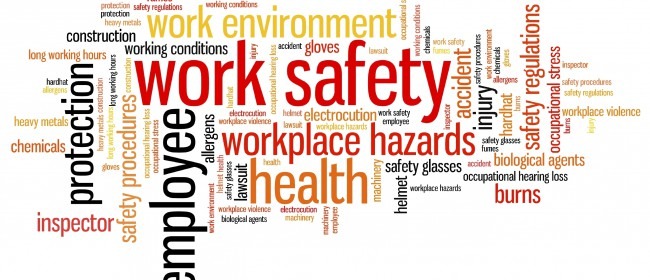Imagine you’ve developed a series of company safety policies and programs, but as a small business owner, you aren’t certain how to communicate them to your employees. This is a huge stumbling block for many organizations—and it can hinder overall workplace efficiencies. While almost anyone can set employee safety training expectations, not everyone knows how to take the next step to effectively keep their employees apprised, trained, and obeying various company safety recommendations.
Are Your Company Safety Policies Failing? Here’s How to Conduct Successful Safety Training for Your Employees
Safety training not only educates your employees, it also increases the safety awareness of all your employees throughout the facility. For this reason, successful company safety policies and management programs depend on getting complete employee buy-in. This means that getting the employees attention, educating them with informed processes, and conducting training in ideal spaces are all as important as actually creating your employee safety-training program in the first place.
To help you achieve the greatest results, we’ve outlined etiquette guidelines for teaching adult learners, the types of teaching styles they respond to best, and recommendations for creating an ideal teaching environment for your audience. These are best practices and effective tips you should utilize when conducting safety training for employees.
Remember Who You’re Working With!
The vast majority of students who attend safety and health training sessions are adults who already possess the knowledge, skills, and abilities to work in their current occupations. The objective of safety and health training is to provide additional knowledge, skills, and attitudes to assist workers in recognizing and taking action to correct hazards in their current work environments.
The following are the basic principles of how adults learn:
- Adults are voluntary learners: Most adults learn because they want to. They learn best when they have decided they need to learn for a particular reason.
- Adults learn needed information quickly: Adults need to see that the subject matter and the methods are relevant to their lives and to what they want in order to learn. They have a right to know why the information is important to them.
- Adults come with a good deal of life experience that needs to be acknowledged: They should be encouraged to share their experiences and knowledge.
- Adults need to be treated with respect: They resent an instructor who talks down to them or ignores their ideas and concerns.
- Adults learn more when they participate in the learning process: Adults need to be involved and actively participating in class.
- Adults learn best by doing: Adults need to “try-on” and practice what they are learning. They will retain more information when they use and practice their knowledge and skills in class.
- Adults need to know where they are heading: Learners need “route maps” with clear objectives. Each new piece of information needs to build logically on the last.
- Adults learn best when new information is reinforced and repeated: Adults need to hear things more than once. They need time to master new knowledge, skills, and attitudes. They need to have this mastery reinforced at every opportunity.
- Adults learn better when information is presented in different ways: They will learn better when an instructor uses a variety of teaching techniques.
Know How You Audience Will Learn Best Now that you know how to approach your employees about your company safety policies and programs, be sure to get to know the 3 kinds of “learning exchanges” that should be used throughout training:
- Participant-to-Participant: “Participant-to-participant” learning exchange recognizes that participants can learn from one another’s experiences. Participant-to-participant exchanges should be a key feature of the training.
- Participant-to-Facilitator: Facilitators can learn as much from training sessions as participants do. On many subjects, a group of participants may have knowledge that is more extensive and experience in certain areas than a facilitator.
- Facilitator-to-Participant: Classroom learning needs structure. A facilitator’s role is to guide discussions, encourage participation, draw out and/or add information as needed, and highlight key issues and points.
Set the Stage—Where You Teach Matters!
Your facility should also serve as a safe haven in support of your company’s employee safety training program. Adequate and appropriate facilities for supporting the training include the following:
- Sufficient space for all attendees to sit comfortably during instruction;
- Sufficient room set-up for participants to interact with one another;
- Enough equipment for all attendees and demonstration equipment for the instructor/facilitator (if applicable);
- Space and facilities for small group exercises or hands-on training using equipment as part of activity-based learning; and
- Equipment, technical support, and resources sufficient to support training via technology, such as during instructor presentations or web-based training used by students to enhance learning (if applicable).
To learn more about how NARFA can help your business, contact us any time you have questions about health and safety audits, company safety programs, or OSHA reporting requirements. We also encourage you to call an NARFA safety consultant for assistance at: (774) 306-1836. The safety consultant can meet with the employees involved in conducting safety audits. Our blog is also filled with valuable educational resources, as is our AICC worker’s compensation coverage program. And don’t forget to stay connected with our Health & Wellness Safety Tips—we’re always adding more tips to help you and your employees create workplace safety.
Recent Posts
IRS Guidance on Nutrition, Wellness, and General Health Expenses
The Internal Revenue Service (IRS) has recently highlighted that costs associated with nutrition, wellness, and general health do not typically qualify as reimbursable medical expenses [...]
HSAs Today and Every Day: A Triple Threat Against Rising Healthcare Costs
The healthcare landscape is constantly evolving, and in 2024, rising costs remain a top concern for both employers and employees. Fortunately, Health Savings Accounts (HSAs) [...]
April Showers Don’t Cause Accidents (Distracted Driving Does): Stay Safe on the Road This Month (and Every Month)
Spring is here, and with it comes April's designation as Distracted Driving Awareness Month. While the changing seasons and blooming flowers might tempt you to [...]




